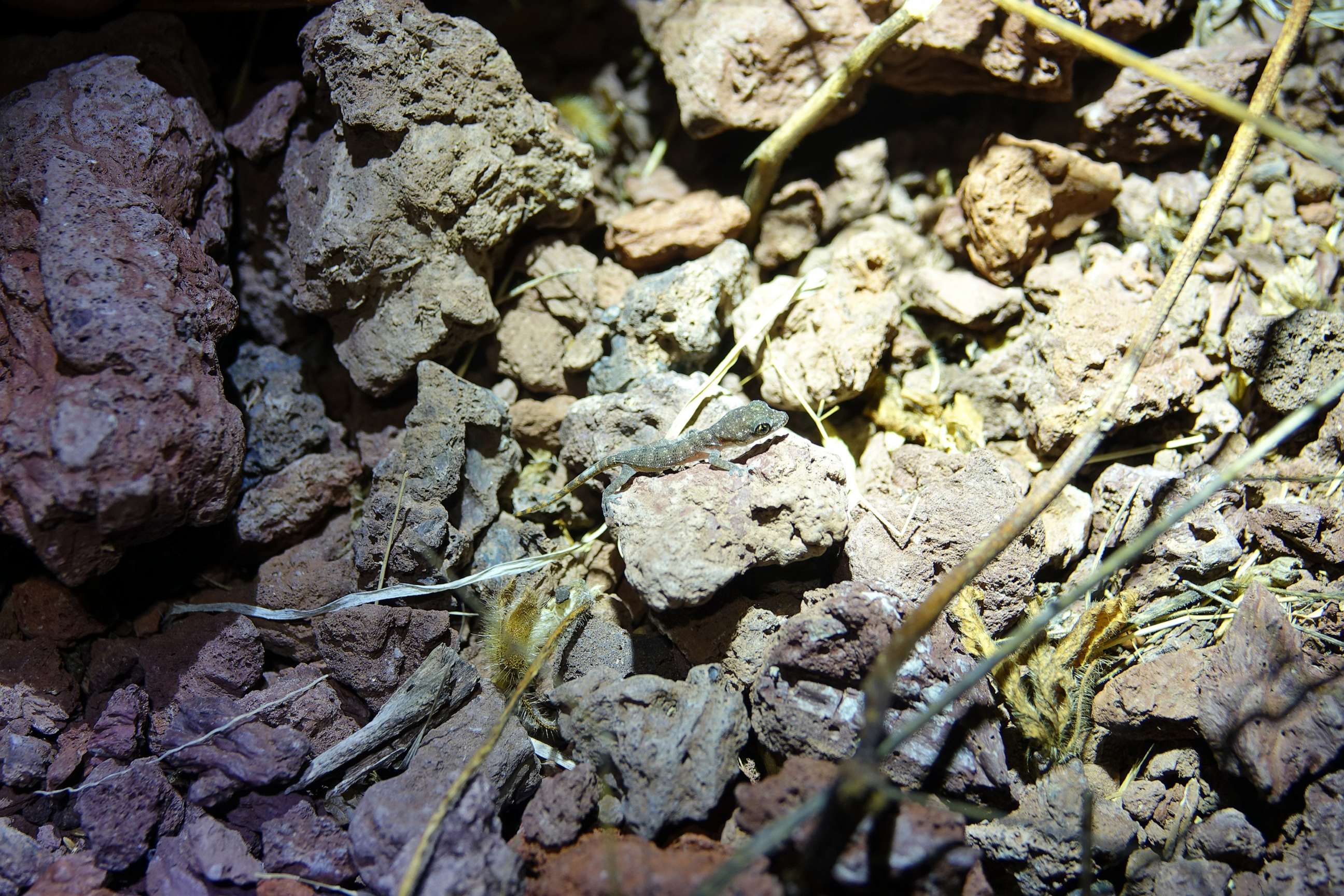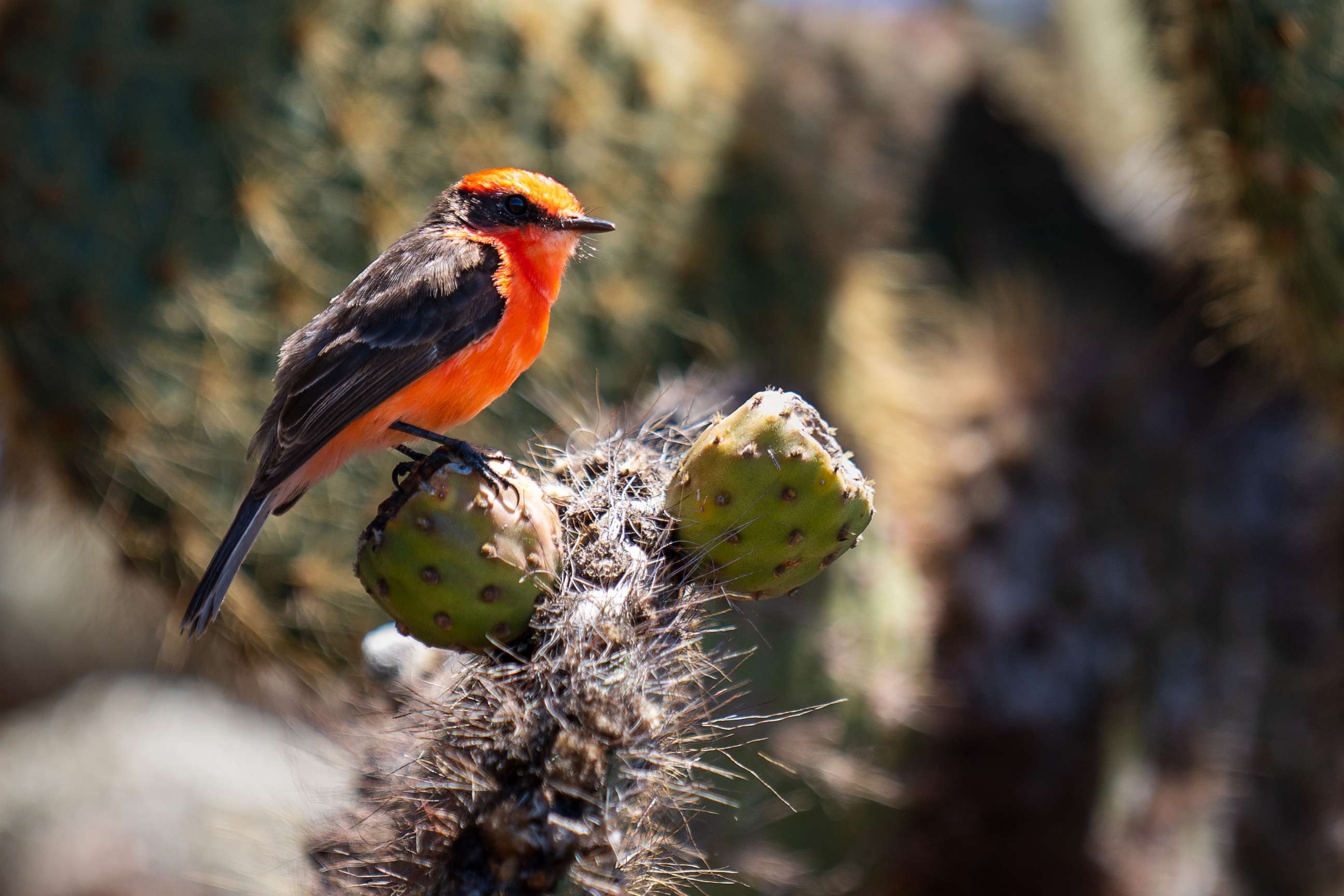Previously extinct bird, gecko populations from the Galapagos Islands have reappeared
A bird species never before seen on the islands has also been discovered.
Two species that were previously extinct on the Galapagos Islands have reappeared a decade after an invasive predator population was eradicated, showing how impactful restoring and re-wilding ecosystems can be for addressing some of the world's environmental and biodiversity crises, according to scientists.
Locally extinct cactus finches and geckos are now "thriving" in their restored habitats, according to biologists who recently traveled to the Rabida and Pinzon islands in the Galapagos to monitor the wildlife recovery 10 years after the removal of an invasive rodent species, according to Island Conservation, a nonprofit organization that focuses on preventing extinctions by removing invasive species from islands.
There have been frequent sightings of the cactus finches on Pinzon Island, a species considered extinct from the region for more than four decades.
A healthy population of geckos, known only from subfossil records dating back more than 5,000 years, have recolonized Rabida Island. Scientists believe that they were likely present but in such small numbers that they weren't able to track the populations, Paula Castano, native species manager at Island Conservation, told ABC News.

Scientists have also documented the presence of Galapagos rails, known locally as pachays, an endemic bird never before reported on this island, on the upper part of Pinzon Island. The researchers believe the rails could have migrated from Santiago Island, another island in the Galapagos, and has now found Pinzon Island to be the ideal habitat to establish itself now that the invasive predatory species is gone.
For decades, perhaps even centuries, invasive rodents such as the black rat and the Norwegian rat, devoured native species and destroyed the natural ecosystems on Pinzon and Rabida Islands, located in the center of the Galapagos archipelago.
The first known black and Norwegian rats likely arrived in the Galapagos beginning in the 1500s, when pirates and buccaneers would travel and move between the islands, Castano said. Additional rodents likely traveled with Charles Darwin when he arrived on the islands in 1835, Castano added.
"And at that time, nobody was paying attention to if these animals were establishing and causing any problems to these native and endemic species," she said. "But, it has caused a lot of damage."

Therefore, many of the native species did not have the mechanisms to cope with the threat, Castano said.
The rodents were removed with the use of anticoagulant rodenticides, a process that took years to implement in order to protect native species, Castano said.
On Nov. 21, a technical team led by park rangers from the Galapagos National Park Directorate and Island Conservation, with support from the Jocotoco Foundation and the University of Idaho, carried out an ecological evaluation to record plant and animal recovery on the Galapagos Islands.
The team will use the data they collected to determine the degree of ecological restoration that the two islands currently maintain by comparing it to data collected prior to removal of the invasive rodents.
The stability of the islands’ natural ecosystems has experienced "much positive change" following the removal of the invasive rodents, including a return of ecosystem processes that provide a safe habitat for native plants and animals -- much of them either existing in low populations or considered locally extinct, the nonprofit announced in a press release on Wednesday.

Every time an ecosystem loses a species it becomes imbalanced, highlighting the importance of conservation and maintenance of invasive species, Castano said.
"The management measures implemented on these islands in recent decades have been effective and today we can see the results," said Danny Rueda Cordova, director of the Galapagos National Park, in a statement. "The islands have once again become the habitat of endemic species of great importance to the ecosystem.”
Local communities are also rooting for the sustainability of the islands, because their livelihoods rely heavily on the tourism industry and conservation efforts, Castano said.
In recent years, the giant tortoise, thought to be extinct for more than 150 years, has returned to nest on Pinzon Island, Cordova said.
"Because of our work to remove invasive rodents, the population now reproduces naturally without human intervention," he said.




